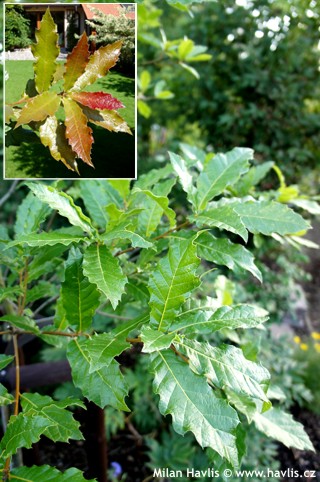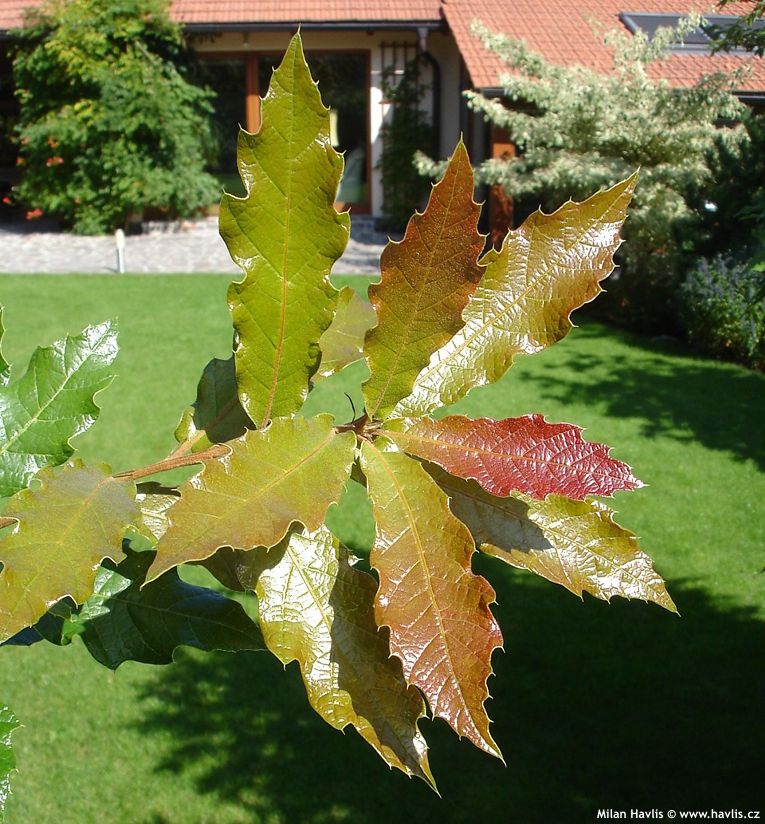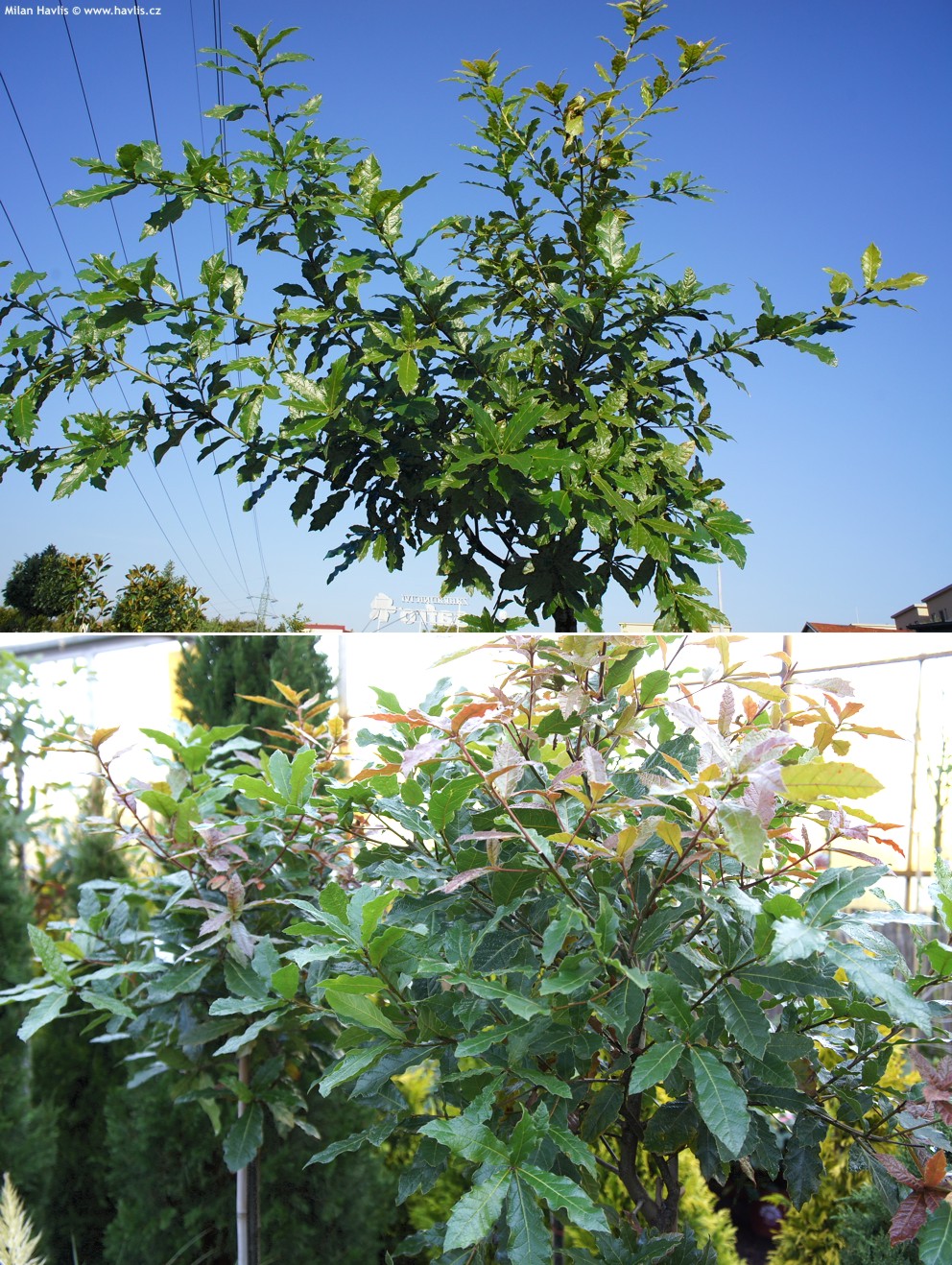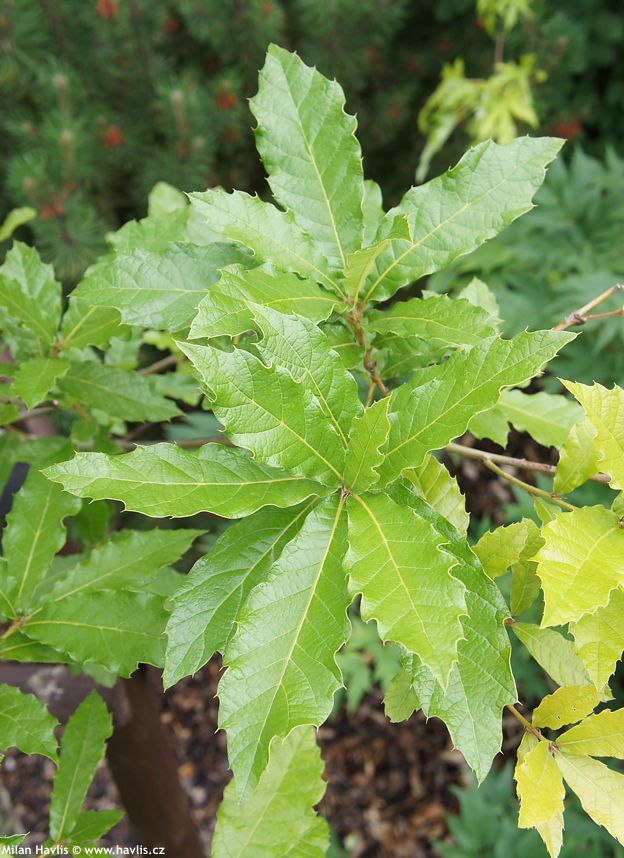Quercus rhysophylla 'MAYA' Mexican oak, loquat leaf oak
Quercus
Before I even start this plant card I must confess to something. I am in love with oaks. It is a form of captivation for no explicable reason, I just am. I am a big lover of oaks and evergreen plants. This combination brings me to an absolute euphoria when presenting this new variety of Mexican OAK which IS evergreen. See? Can I be happier? :-)
Mexican oak is not a widespread tree. It is not listed in many encyclopedias in America and is almost non existent in Europe as it is too tender to grow in most parts of the old continent. Still, there is a mention in 1979 of a special sport selected from this species. At that time Internet was yet to be born and news of any kind took long to get to the right ears. But some European growers did not sleep and began its cultivation. The result came much later - in 2006 when it was presented at a garden exhibition in Dutch town Zundert under the name Maya. Worthily it was rewarded with a gold medal as the best invention and that is the year when modern history of this beautiful tree really began. Thanks to this in 2009 good and specialty nurseries already had nice plants for sale in garden centres.
Maya is correctly called loquat leaf oak because its leaves do resemble those of eriobotrya japonica = loquat. They are large, leathery and very glossy on the surface, lance shaped to narrowly obovate with wavy margins, crimson red and hairy when they emerge, turning bright burgundy red and coppery orange, maturing to rich green in summer. They make a second flush of leaves in midsummer. They are evergreen, though leaves on freshly transplanted and not well-established plants may dry out in late winter or after too strong frost and will fall down when new leaves emerge in the spring.
Loquat leaf oak Maya is initially a fast grower and we recommend pruning it to achieve dense habit on young plants. You can cut it in early spring and for the second time in the first half of July. It allegedly tolerates most soil types but for the best results grow it in fertile, humus-rich, moist but well-drained soil. Ours was put to acid soil and is doing great. Young trees with stems need good support for 2-3 years. We tested its hardiness down to -23°C for 3 nights (USDA zone 6) - without problems. Still, nurseries suggest avoiding exposed locations with freezing winds.
Last update 01-12-2011

9 180 Kč

12 580 Kč
Goods are shipped all over Europe. For Russia and U.K. and for further details please read about SHIPPING OPTIONS HERE.
Are you interested in a serious discount for orders NOV-FEB? Check your options here.
THE PRICES INCLUDE VAT of 15%. For quick conversion you can use 1 CZK = approx. 0.04 EUR
- STANDARD QUALITY - Plants of this group are 1st class quality with number of branches and overall density adequate to their size and age, considering they were container grown.
- DE LUXE QUALITY - This label guarantees a luxurious quality of manually selected plants that, compared to their height and age, are exceptionally dense and beautiful.
- EXTRA - These plants are usually mature and bigger specimens with exceptional overall appearance.
- STANDARD (as described in the plant form) means a tree with a trunk of 190-210 cm and a crown at the top, unless specified differently. The commercial size for trees is their girth measured in the height of 1m from ground.
- HOBBY - These plants are of the same quality as our standard-quality plants but younger and therefore cheaper.
- SHRUB - a woody plant with branches growing bushy from the ground level.
- HALF-STANDARD or MINI-STANDARD - a small tree with shorter trunk, its size is usually specified.
- FEATHERED - These are trees with branches growing already from the base of the trunk and up along the stem.
- GRASSES and PERENNIALS - Sizes given usually read the diameter of the pot or the clump, as specified.







































